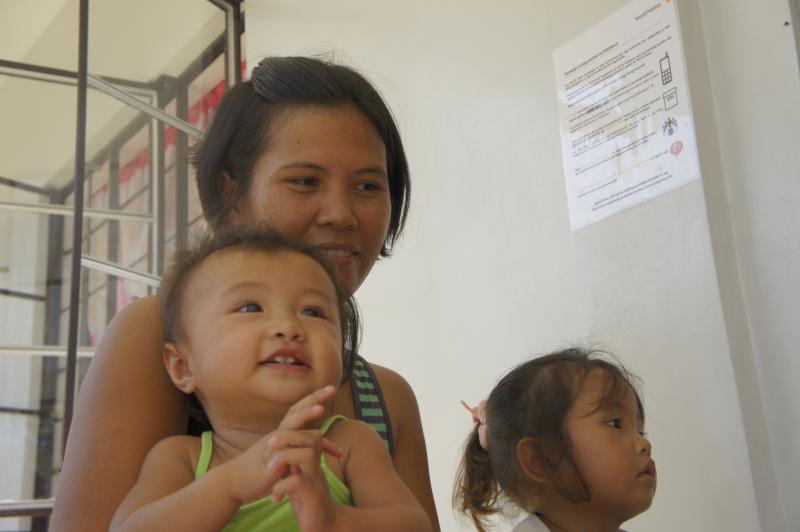Where We Work
See our interactive map


Merida, Philippines – I met Jocelyn Pingos, 27, in Merida, Leyte, on a bright, sunny, tropical day in the Philippines.
A mother of four, Jocelyn sat outside her local health center and waited patiently to have her youngest, Lenith, 10 months, looked at because of a nagging cough. Her second youngest, Jelenia, 3, was also with her.
Jocelyn’s other children who are 9 and 6 were attending school.
When Jocelyn delivered Lenith earlier this year, she and her husband decided that she should have a tubal ligation two months after her delivery.
“I have no plans to have any more children,” Jocelyn said.
Jocelyn delivered her two youngest, Jelenia and Lenith, at the local hospital. Her two oldest were delivered at home.
Over half of all Filipino women deliver their babies at home.
“For the first two, the midwife came to my home,” Jocelyn remembered. “The midwife wasn’t available for the last two.”
Even though Jocelyn will not have any more children she came to learn that having a baby at the hospital was better for her than delivering at home, even though she experienced no complications during her home births.
“I prefer to go to the hospital to give birth because I was comfortable with the doctor,” Jocelyn said. “If there was an emergency I could rely on the doctor. I was also happy to give birth at home around my family, but if something happened at home, it’s only the midwife that could help me.”
Giving birth in a hospital with trained health workers is critical to saving more mothers’ lives during childbirth. Over half of all Filipino women deliver their babies at home making reaching the Millennium Development Goal (MDG) 5 difficult to achieve by 2015.
Thirteen mothers die every day in the Philippines due to complications during childbirth, primarily hemorrhaging, according to UNICEF.
Like many low- and middle-income countries, the Philippines is relying on the training of more midwives who can aid mothers during prenatal checkups, delivery in a hospital setting, and postnatal care. If a scale-up of midwife training and reproductive health services fails to improve, maternal deaths will continue to rise, as it did in 2011, instead of steadily declining to reach the country's MDG 5 goal.
I was a guest of World Vision USA to report on its recovery work after Typhoon Haiyan. This post originally appeared on Mom Bloggers for Social Good. Photo by Jennifer James.
Get the latest updates from the blog and eNews




